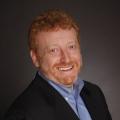New Federal Pipeline Safety Plan Tackles Big Issues, Skips a Few Key Concerns
PHMSA Proposal Would Expand Jurisdictional Scope Over Fast-Growing Network
New regulations proposed last week by the federal Pipeline and Hazardous Materials Safety Administration (PHMSA) would step up safety inspections on the nation’s natural gas pipelines in an effort to keep pace with the evolving needs of a pipeline system that is rapidly expanding in some areas while facing the ravages of old age in others. Although the plan represents progress for the agency, it would also defer action on other key concerns.
This is the agency’s first major regulatory overhaul since a series of high profile accidents, starting with the 2010 explosion in San Bruno, California that killed eight people, and culminating in the massive four-month leak at the Aliso Canyon storage facility in Los Angeles, which released nearly 100,000 metric tons of methane into the atmosphere. It’s also PHMSA’s first big step since the Obama administration made clear its plans to reduce the nation’s oil and gas methane emissions.
“It is good to see the agency moving the ball forward, and to see PHMSA beginning to address the risks associated with pipelines and gathering systems,” said Mark Brownstein, head of the oil and gas program at Environmental Defense Fund (EDF). “But recent accidents have also shown the serious problems that can erupt on other parts of the system, particularly storage facilities like Aliso Canyon. The agency needs to set a concrete timetable for meaningful action on these hazards as well.”
Methane is an extremely potent greenhouse gas, with more than 84 times the warming power of carbon dioxide over a 20 year timeframe. All told, the industry emits at least 9.3 million metric tons of methane a year according to the newest draft estimates by the Environmental Protection Agency (which is 27 percent more than tallies using EPA’s earlier methods). Together gathering, storage, and transmission (pipeline) sectors of are responsible for 42 percent of the oil and gas industry’s methane emissions.
With more than 3 million members, Environmental Defense Fund creates transformational solutions to the most serious environmental problems. To do so, EDF links science, economics, law, and innovative private-sector partnerships to turn solutions into action. edf.org
Media Contact
Latest press releases
-
EU Methane Regulation Emerges As Strategic Tool For Energy Security
December 10, 2025 -
Court Strikes Down Trump Administration’s Reckless Wind Energy Permitting Ban
December 8, 2025 -
Court Orders Trump Administration to Release Records of Secret Group That Wrote Report Attacking Climate Science
December 8, 2025 -
COMING SOON: An effort to weaken our popular chemical safety law
December 8, 2025 -
Groups File Lawsuit Challenging Trump EPA Final Rule That Delays Methane Pollution Protections from Oil and Gas Industry
December 4, 2025 -
New Statewide Survey: As Electricity Demand and Costs Skyrocket, Arizonans Support Building More Wind and Solar Energy
December 4, 2025











